#qualitative consumer research
Explore tagged Tumblr posts
Text
5 Key Drawbacks of Using Focus Groups in Research
Focus groups have long been a staple in qualitative research, offering a platform for gathering insights directly from consumers in a group setting. However, while they can be highly effective in certain scenarios, they also come with significant limitations and disadvantages. This blog explores five major drawbacks of focus groups in research, providing an in-depth analysis that aims to help researchers, marketers, and decision-makers understand the potential pitfalls of using this method.
What Are Focus Groups?
Before diving into the limitations, it’s essential to clarify what focus groups are. A focus group is a qualitative research method that involves a small, diverse group of participants who discuss a specific topic guided by a moderator. The goal is to collect rich, qualitative data about participants’ perceptions, opinions, beliefs, and attitudes.
Focus groups are often used in market research to gain insights into consumer behavior, brand perception, product development, and marketing strategies. While they provide valuable qualitative data, they also come with various limitations that researchers must consider.
1. Group Dynamics Can Skew Results
Influence of Dominant Personalities
One of the most significant limitations of focus groups is the impact of group dynamics on the quality of the data collected. In a group setting, certain individuals may dominate the conversation, leading to biased results. Dominant personalities can overshadow quieter participants, resulting in a lack of diverse opinions. This imbalance can prevent researchers from capturing the full spectrum of consumer perspectives, which is crucial for accurate insights.
Conformity and Peer Pressure
Participants may also experience peer pressure to conform to the opinions expressed by dominant group members. This phenomenon, known as “groupthink,” can lead to less authentic responses. Participants may hold back their true feelings or opinions, fearing judgment or rejection from their peers. As a result, the data collected may not reflect the individual views of all participants, limiting the overall validity of the research findings.
Mitigation Strategies
To mitigate these issues, researchers can implement various strategies:
Careful Participant Selection: Aim for a diverse group of participants to encourage varied opinions and reduce the influence of dominant individuals.
Skilled Moderation: A skilled moderator can create an inclusive environment that encourages all participants to share their views. They should actively manage the conversation, ensuring that quieter voices are heard and dominant voices do not overshadow others.
Anonymous Feedback: Incorporating anonymous feedback mechanisms, such as written responses, can help gather individual opinions without the influence of group dynamics.
2. Limited Sample Size
Generalizability Issues
Focus groups typically involve a small number of participants, often ranging from six to twelve individuals. This limited sample size poses challenges regarding the generalizability of findings. Insights gathered from a small group may not accurately represent the broader population, leading to skewed conclusions that can misinform marketing strategies or product development.
Statistical Limitations
Because focus group data is qualitative, it lacks the statistical rigor required for quantitative analysis. Researchers cannot easily extrapolate results to a larger population, making it difficult to establish trends or patterns with confidence. This limitation can lead to strategic decisions based on potentially misleading insights.
Alternative Approaches
To address these limitations, researchers can consider the following alternatives:
Supplement with Quantitative Research: Combining focus groups with quantitative methods, such as surveys, can help validate findings and provide a more comprehensive understanding of consumer behavior.
Larger Sample Sizes: Conducting multiple focus groups with different segments of the target population can enhance the validity of insights while still maintaining the qualitative richness of the data.
3. Potential for Bias
Moderator Influence
The role of the moderator is crucial in guiding the discussion and extracting valuable insights. However, an inexperienced or biased moderator can inadvertently lead participants toward specific answers or topics, resulting in biased outcomes. For example, if a moderator expresses personal opinions or leads participants with leading questions, it can skew the discussion and impact the integrity of the data collected.
Participant Bias
Participants may also exhibit bias in their responses. They might provide socially desirable answers rather than their true feelings, especially in a group setting where they fear judgment. This tendency can significantly affect the quality and authenticity of the data.
Strategies to Minimize Bias
Researchers can employ several strategies to minimize bias in focus groups:
Training for Moderators: Ensure moderators receive thorough training in facilitating discussions and managing biases. They should learn to ask open-ended questions and avoid leading participants toward specific responses.
Clear Guidelines: Establish clear guidelines for participants regarding confidentiality and the importance of honesty in their responses. This approach can help create a safe environment for open discussion.
Use of Probing Questions: Encourage moderators to use probing questions to delve deeper into participants’ thoughts and feelings, fostering a more authentic dialogue.
4. Cost and Resource Intensive
Budget Constraints
Conducting focus groups can be resource-intensive, both in terms of time and money. Costs associated with recruiting participants, compensating them for their time, renting facilities, and hiring skilled moderators can add up quickly. For smaller organizations or those with limited budgets, these expenses can be prohibitive, leading to a preference for more cost-effective research methods.
Time Requirements
Additionally, focus groups require significant time to plan, conduct, and analyze. Researchers must invest time in participant recruitment, session preparation, and post-session analysis. This lengthy process can delay decision-making and hinder organizations’ ability to respond quickly to market changes.
Cost-Effective Alternatives
Organizations with budget constraints may consider the following alternatives:
Online Focus Groups: Virtual focus groups can reduce costs associated with venue rental and travel. They can also broaden the pool of potential participants, allowing for greater diversity.
Leverage Technology: Utilize online survey tools or social media platforms to gather qualitative insights at a fraction of the cost of traditional focus groups.
DIY Approaches: For organizations with limited budgets, consider conducting informal discussions or interviews with target audiences. While these may not provide the same depth as formal focus groups, they can still yield valuable insights.
5. Analysis Challenges
Complexity of Qualitative Data
Analyzing qualitative data from focus groups can be challenging and time-consuming. Unlike quantitative data, which can be easily summarized and statistically analyzed, qualitative data requires a thorough examination of themes, patterns, and nuances within the discussions. This complexity can lead to subjective interpretations, potentially affecting the reliability of findings.
Skill and Experience Required
Effective qualitative data analysis often demands specialized skills and experience. Researchers need to be adept at identifying and coding themes, understanding context, and drawing meaningful conclusions from discussions. Inadequate analysis can result in misinterpretation of data, undermining the value of the research.
Strategies for Effective Analysis
To enhance the analysis of focus group data, researchers can consider the following strategies:
Training and Development: Invest in training for researchers and analysts to improve their qualitative data analysis skills. Familiarize them with coding techniques and qualitative analysis software.
Collaboration: Encourage collaboration among team members to review and discuss findings collectively. This collaborative approach can lead to richer interpretations and reduce individual biases.
Framework Development: Establish a clear framework for analyzing focus group data, including predefined categories and themes. This framework can guide the analysis process and help maintain consistency.
Conclusion
While focus groups can be a valuable tool for qualitative research, it is crucial to recognize their limitations and disadvantages. From group dynamics influencing results to challenges in generalizability and analysis, researchers must navigate these pitfalls carefully. By understanding these drawbacks, market researchers and decision-makers can make informed choices about their research methodologies and explore alternative approaches to gather insights effectively.
Incorporating strategies to mitigate these limitations—such as combining focus groups with quantitative research, ensuring skilled moderation, and investing in analysis training—can enhance the effectiveness of focus groups and provide richer, more accurate consumer insights.
Ultimately, the key to successful research lies in understanding the strengths and weaknesses of each method, enabling organizations to select the most appropriate approaches to gather the insights they need to thrive in an ever-evolving marketplace.
For more insights on market research methodologies and to learn how Philomath Research can help you navigate the complexities of consumer insights, visit Philomath Research.
FAQs
1. What is primary market research?
Primary market research is the process of gathering first-hand data directly from consumers or target audiences. This includes techniques such as surveys, interviews, focus groups, and observations. Unlike secondary research, which analyzes existing data, primary research provides customized insights that are highly relevant to your specific business needs.
2. How does primary market research benefit brand building?
Primary market research allows brands to understand consumer preferences, needs, and behaviors directly from the source. This insight helps brands tailor their products, marketing strategies, and customer experiences, ultimately fostering stronger brand loyalty and positioning in the market.
3. What methods are commonly used in primary market research?
Common methods include:
Surveys: Collect quantitative data on consumer opinions and behaviors.
Focus Groups: Engage small groups to discuss and provide feedback on products or concepts.
In-Depth Interviews: Conduct one-on-one discussions to gain deeper insights into consumer motivations.
Observational Studies: Monitor how consumers interact with products in real-time to gather behavioral data.
4. What is the typical timeline for conducting primary market research?
The timeline for conducting primary market research can vary based on the method used and the scope of the study. Generally, a well-planned research project may take anywhere from a few weeks to several months, including designing the research tools, recruiting participants, collecting data, and analyzing results.
5. How can I ensure my primary market research is effective?
To ensure effective primary market research:
Clearly define your research objectives.
Choose the right research method based on your goals.
Design unbiased and clear questions for surveys and interviews.
Select a representative sample of your target audience to gather relevant insights.
6. What role does primary market research play in product development?
Primary market research plays a crucial role in product development by providing insights into customer needs and preferences. It helps businesses validate product ideas, test concepts, and gather feedback on prototypes, ensuring that the final product resonates with the target audience and meets market demands.
7. Can small businesses benefit from primary market research?
Yes, small businesses can greatly benefit from primary market research. It helps them understand their customers better, make informed decisions, and compete effectively in the market. Even with limited budgets, small businesses can conduct cost-effective surveys and focus groups to gather valuable insights.
8. How often should I conduct primary market research for my brand?
The frequency of conducting primary market research depends on various factors, including market dynamics and business changes. Brands should consider conducting research annually for brand health tracking, prior to launching new products, or when entering new markets to stay updated on consumer preferences.
9. How does Philomath Research support primary market research efforts?
Philomath Research offers a range of tailored primary market research solutions, including survey design, focus group facilitation, and in-depth interviews. Our team specializes in providing actionable insights that help brands make informed decisions and strengthen their market position. Contact us to learn how we can assist you in achieving your brand-building goals.
10. What industries can benefit from primary market research?
Primary market research can benefit virtually any industry, including retail, technology, healthcare, food and beverage, and more. Regardless of the sector, understanding customer preferences and behaviors is essential for building successful brands and products.
0 notes
Text
Post-Pandemic Ethnography: Market Research In A Changed World

Explore the evolution of ethnographic research in the post-pandemic era. Discover how virtual and hybrid methods have adapted to the new normal and delve into success stories of ethnographic research conducted during and after COVID-19. Uncover valuable insights into market research in a transformed world.
Link : https://maction.com/post-pandemic-ethnography-market-research-in-a-changed-world/
#PostPandemic#Ethnography#Market#Research#Virtual#Hybrid#Covid19#Impact#Consumer#Behavior#Qualitative#Remote#Online#Ethnographic#Methods#Insights#Trends#Digital#Transformation#New Normal#Psychology
0 notes
Text
What Is Market Research: Methods, Types & Examples
Learn about the fundamentals of market research, including various methods, types, and real-life examples. Discover how market research can benefit your business and gain insights into consumer behavior, trends, and preferences.
#Market research#Methods#Types#Examples#Data collection#Surveys#Interviews#Focus groups#Observation#Experimentation#Quantitative research#Qualitative research#Primary research#Secondary research#Online research#Offline research#Demographic analysis#Psychographic analysis#Geographic analysis#Market segmentation#Target market#Consumer behavior#Trends analysis#Competitor analysis#SWOT analysis#PESTLE analysis#Customer satisfaction#Brand perception#Product testing#Concept testing
0 notes
Text
NB-IoT Smart Meter Market

#NB-IoT Smart Meter Market Overview:#Global NB-IoT Smart Meter Market research provides insights into consumer behavior#industry trends#and market competition through the use of various research techniques#including surveys#interviews#and data analysis. The industry serves a wide range of clients#including businesses#government agencies#and non-profit organizations. NB-IoT Smart Meter Market is highly diverse#with a range of services and specialties#including quantitative and qualitative research#brand research#product testing#customer satisfaction research#and competitive analysis.
0 notes
Text

Did you know that India's dairy market is projected to reach $124.93bn in 2023? That's a growth of over 8% from 2022!
The Indian #dairy market is one of the most dynamic and fastest-growing in the world. Learn more about this exciting market in our latest article.
Click the link to read the full article and learn more about the future of the dairy business in India. - https://www.instagram.com/p/CvZLae8v80L/?img_index=1
#research gates#researchers#market researchers#qualitative research#action research#operations research#quantitative and qualitative research#consumer research#audit company#experimental research#market research analyst#business research#Research Consultants#Researchers#market research consultants#Market Researchers#Audit Company#Auditing Company#Company Audit#mystery shopping#secret shopper
0 notes
Text
A quick meal
cw: shameless smut, no use of y/n, female anatomy for reader, desk sex, dirty talk, slightly rough(-ish)? perhaps??
word count: 1,5k
eng is not my first language, please inform me if you spot any mistakes!

Viktor always knew it’s what inside that counts. And so he counted. Every rich moan escaping your mouth, every squelch of the fondly fingered pussy — it’s every prominence, fold and flexure, and, of course — exactly how much pressure you prefer on your clit. Well, at least that explanation was the only reasonably-appearing one to you, because how the hell did he know how to make you cream his fingers in coats of delicious stickiness in exactly few minutes, the stretch of them so qualitative your throbbing walls could easily accept his cock with little to no effort put into penetration. He must have used an ungodly amount of diligence to develop this specific technique just for you — his precious, lecherous sweetheart. Your whimpers are a devil on his shoulder, distracting him from being a stern, dispassionate about anything except for his research man. That little temptation invited him into the warmth of your precious core instead. It kept luring in, filling his genius mind with dreamy filth. Besides: it’s so much better to be buried within the tightness of your cunt than within the loneliness of his lab, untouched and craving you in his arms so desperately. No, he most certainly would prefer the first option.
“Relax,” sultry whisper teases your ear, while the free from fucking into you hand crawled up, preliminarily teasing the swell of each breast on its way to your throat — to be wrapped around it like a pretty collar, securely tight, not firm enough to actually hurt, but to rather keep you in place, adding to the thrill, to the longing.
He rarely fucks you like this. Viktor’s never been a huge fan of quickies — he’s a taster at heart, thorough and passionate — a sloppy kiss here, a teasing lick there — working you up even when it’s not needed anymore, for the sake of pure entertainment — more his than yours, to be completely honest, but he would never willingly admit to that.
He likes to savour you, like a fresh fruit one’s supposed to eat slowly — painfully so, even, memorising the flavour in explicit detail, letting it engrave into the taste receptors.
But there’s cyanide even in the finest peaches. Eat too many — and you’re incapable of consuming anything anymore, death plastered across your gourmand-face. It takes around fifteen peach pits to kill a curious starved soul, after all.
So tonight Viktor stays away from the cyanide. He’s had enough ravishing for now, turning a solid number of your previous intercourses into love-making. He’s eager, and he’s treating you like a quick meal — totally different from his usual ‘eat-you up-like-you’re-the main course’ demeanour. Not that you mind, of course. Dining hastily has its charms too.
“Keep your legs spread for me,” the gentle demand continues to sting your ear, and as much as you’d love to comply — you simply can’t, trembling knees doing you no favours, allowing no small mercies.
“Darling?” he repeats, the sharpness of his ‘r’ a scrumptious scratch to your brain, turning you into a mess — nearly irreparable, matching the one you’ve turned his desk into once he bent you over it, capturing tightly between his erection and the hard wooden edge, kindly depriving you off the worries about your clothes getting in the way. So thoughtful of him.
Rolled up skirt rests on your lower back, exposing the plumpness of soft hips — so grabable, they’re practically begging for his attention, but he’s reluctant to pull the long fingers out of you just yet. You’re clenching around them so perfectly, blessing him with the privilege of feeling your every twitch.
The presence of your underwear doesn’t concern you anymore — it’s wrapped around your ankles, pretty lace occasionally tickling the skin, reminding of the abrupt harshness Viktor’s sinewy hands had ripped them off you with. So brusque when it comes to fucking you from behind that a mere touch feels rougher than the deepest of thrusts. Your pussy might be able to take him without turning into a mess, but your sanity? You wish he’d left you some, just the tiniest bit to at least obey him easily.
But not all wishes were meant to be fulfilled.
You mewl something hopelessly illegible as your words drown in your own moan, lewd sounds of his fingers parting the swollen folds of an already spent cunt louder than your actual voice. And suddenly body language is not a figurative concept anymore.
“Don’t make me repeat myself,” the kind threat encourages hoarsely. “Or should I spread them for you?”
You can only squeeze out a nod. Viktor releases your neck with a sympathetic chuckle, and a deft hand grabs at your left calf, helping a trembling leg to step out of the damp lingerie, leaving it completely forgotten and lonely on the floor. You’ll collect it later: if only the dirty-minded inventor lets you, of course. Which was highly doubtful, since tucking your undergarments into a pocket of his dresspants started to really grow on him lately. The possibility of obstaclessly fucking you over another surface once you’re in private again is too tempting to be pushed away so fast.
You fall on his desk, cold wood a tough pillow to your flushed cheek. However the loving hand stroking at your flesh doesn’t move to proceed with complaisant ministrations on your right limb. The buckle of his belt jingles, unfastening, negligently joining your underwear on the floor. You quirk an inquisitive eyebrow, putting a rather pathetic effort into propping yourself up, searching for an explanation to his movements. But a rough palm falls on your lower back with a thump, firmly pacifying, practically smacking.
“Don’t move, dear,” he hisses, pulling his fingers out of you right before you got the chance to cum all over them. Scarily rigorous again. And vicious. But you don’t say that. It’s not like you’re able to talk coherently anyway.
Something — which you suspect to be his foot — persistently forces your legs out of the way, sprawling you more for his hungry gaze. The toe of his shoe roughly kisses each one of your heels, spreading you open, just as he’d promised.
“How rude!” you exclaim, voice dripping with fake resentment.
“Rude?” he laughs, and the next thing you feel is a caring peck on a shoulder, the sweet heat of his breath back where it belongs — teasing the shell of your ear. “Well, please excuse me this one whim, but can you really blame me? Besides, I suppose my… barbarism happened to be quite efficient.”
His tip is pressed against your entrance, slowly working its way inside, brushing a puffy labia on its way. You’re sure it’s leaking with precum for you already — it might be impossible to feel through the lavish wetness seeping out of you, but you know Viktor good enough to be certain of pearly bitterish liquid breaking out of his slit.
You don’t lack his fingers anymore — not when you’re about to be so much more palpably filled, the thickness of his cock irreplaceable with any amount of his phalanxes. An unsolved mystery for both of you. The one leading you to an embarrassingly primitive statement — whatever it is so special about him keeps you coming back for more.
“There was no need to be so ill-mannered. I could have spread my legs just perfectly fine,” you mutter a shameless lie, already expecting a protest.
“And from my expertise you weren’t exactly competent,” Viktor mocks with a tortuously handsome smirk, and you make a fatal mistake of looking over your shoulder right when his narrow hips thrust into yours, his length splitting you with a delicious burn. It takes away the remnants of your stamina. “Because trust me, I can tell when one’s incapable of standing on their own feet — let alone moving properly. Coming from an adept, figuratively speaking.”
He bends lower, warm dry lips pressed to the glistening sweat on your temple. He doesn’t rush to have his way with you anymore, hand found peace on your chin, tilting up, gently forcing a thumb into the open mouth. You greet it with a needy bite, a wordless plea to convince him to finally start pounding into you, to satisfy the body lusting for his steady thrusts.
“You’re quivering,” Viktor notes with a pensive hum. “Shall I proceed? You look like you’re in more need of a cane than I am, my darling. So wobbly.”
The plea-bite on his thumb quickly turns into a menacing one. Canine pierces the skin, earning a muffled against the mess of your hair ‘ouch’, demanding the heartily craved resumption.
“Am I pinned like this forever or are you done with the fucking drollery?”
A sultry laugh caresses your ear, and the throbbing cock inside you slips almost all the way out, leaving you clenching purely around the bulging tip.
“Save the swearing,” utters the pretty tempter.
A rough roll of his hips into yours. Ass bounces off his pelvis, the slap of skin against skin loud and resonant, mingling with your desperate gasp just perfectly. Has you seeing numerous sparks, mouth drops open in a breathless ‘yes’.
“That vocabulary is only appropriate for an orgasm.”
#viktor x reader#viktor arcane#viktor fanfic#viktor smut#viktor x f!reader#viktor x reader smut#viktor arcane x reader#viktor arcane smut
1K notes
·
View notes
Text
The Millennials' Polar Expedition
A year ago today (23 Nov 2022), I launched Worst Journey Vol.1 at the Scott Polar Research Institute. This is the text of the speech I gave to the lovely people who turned up to celebrate.
As many of you know, my interest in the Terra Nova Expedition was sparked by Radio 4’s dramatisation of The Worst Journey in the World, now 14 years ago. The story is an incredible story, and it got its claws into me, but what kept me coming back again and again were the people. I couldn’t believe anyone so wonderful had ever really existed. So when I finally succumbed to obsession and started reading all the books, it was the expedition members’ own words which I most cherished. These were not always easy to come by, though, so plenty of popular histories were consumed as well. Reading both in tandem, it soon became clear that, while there were some good books out there, there was a lot of sloppy research in the polar echo chamber as well.
I also discovered that no adaptation had attempted to get across the full scope of the expedition. There has never been a full and fair dramatic retelling, all having been limited by time, budget, or ideology from telling the whole story truthfully. I was determined that my adaptation would be both complete and accurate, and be as accountable as possible to those precious primary documents and the people who wrote them.
So the years of research began. I moved to Cambridge to be able to drop in at SPRI and make the most of the archives. Getting to Antarctica seemed impossible, but I went to New Zealand to get at least that much right, and on the way back stayed with relatives in Alberta, the most Antarctic place I could realistically visit. I gathered reference for objects wherever I could. Because Vol.1 takes place mainly on the Terra Nova, which is now a patch of sludge on the seabed off Greenland, I cobbled together a Franken-Nova in my mind, between the Discovery up in Dundee and the Star of India in San Diego. I spent a week on a Jubilee Sailing Trust ship in order to depict tall-ship sailing correctly. I’m sure I’ve still got loads of things wrong, but I did all I could, to get as much as I could, right.
But still, everyone I met who had been to Antarctica said, “you can’t understand Antarctica until you’ve been there, and you can’t tell the story without understanding Antarctica; you have to go.” So I applied to the USAP’s Antarctic Artists and Writers Program, with faint hope, as they do “Ahrt” and I draw cartoons. But I must have blagged a good grant proposal, because a year after applying, I was stepping out of a C-17 onto the Ross Ice Shelf. The whole trip would have been worth it just to stand there, turn in a circle, and see how all the familiar photographs fit together. But the USAP’s generosity didn’t stop there, and in the next month I saw Hut Point, Arrival Heights, the Beardmore Glacier (including the moraine on which the Polar Party stopped to “geologise”), and Cape Crozier, and made three visits to the Cape Evans hut. Three! On top of the visual reference I got priceless qualitative data. The hardness of the sound. The surprising warmth of the sun. The sugary texture of the snow. The keen edge on a slight breeze. The way your fingertips and toes can start to go when the rest of you is perfectly warm. The SHEER INSANITY of Cape Crozier. The veterans were right – I couldn’t have drawn it without having been there, but now I have, and can, and I am more grateful than I can ever adequately express. With all these resources laid so copiously at my feet, all I had to do was sit down and draw the darn thing. Luckily I have some very sound training to back me up on that.
Now, this is all very well for the how of making the book, and, I hope, interesting enough. But why? Why am I putting so much effort into telling this story, and why now?
Well, it means a lot to me personally. To begin to understand why, you need to know that I grew up in the 80s and 90s, at the height of individualist, goal-oriented, success-driven, dog-eat-dog, devil-take-the-hindmost neoliberalism. It was just assumed that humans, when you get right down to it, were basically self-interested jerks, and I saw plenty of them around so I had no reason to question this assumption. The idea was that if you did everything right, and worked really hard, you could retire at 45 to a yacht in the Bahamas, and if you didn’t retire to a yacht, well, you just hadn’t tried hard enough. Character, in the sense of rigorous personal virtue, was for schmucks. What mattered was success. Even as my politics evolved, I still took it as a given that this was how the world worked, and that was how people generally were – after all, there was no lack of corroborating evidence. So: I worked really hard. I single-mindedly pursued my self-interest. I made sacrifices, and put in the time, and fought my way into my dream job and all the success I could have asked for.
And then I met the Terra Nova guys.
What struck me most about them was that even when everything was going wrong, when their expectations were shattered and they had to face the cruellest reality, they were still kind. Not backbiting, recriminating, blame-throwing, defensive, or mean, as one would expect – they were lovely to each other, patient, supportive, self-sacrificing; in fact the worse things got, the better they were. They still treated each other as friends even when it wasn’t in their self-interest, was even contrary to their self-interest. I didn’t know people could be like that. But there they were, in plain writing, being thoroughly, bafflingly, decent. Not just the Polar Party – everyone had to face their own brutal realities at some point, and they all did so with a grace I never thought possible.

It presented a very important question:
When everything goes belly-up, and you’re facing the worst, what sort of person will you be?
Or perhaps more acutely: What sort of person would you rather be with?
It was so contrary to the world I lived in, to the reality I knew – it was a peek into an alternate dimension, populated entirely with lovely, lovely people, who really, genuinely believed that “it’s not whether you win or lose, but how you play the game,” and behaved accordingly. It couldn’t be real. There had to be a deeper, unpleasant truth: that was how the world worked, after all. I kept digging, expecting to hit bottom at some point, but I only found more gold, all the way down. How could I not spend my life on this?
Mythology exists to pass on a culture’s values, moral code, and survival information – how to face challenges and prevail. Scott’s story entered the British mythology, and had staying power, because it exemplified those things so profoundly for the culture that created and received it. But the culture changed, and there were new values; Scott’s legacy was first inverted and then cast aside. The new culture needed a new epic hero. You’d think it would be Amundsen, the epitome of ruthless success, but “Make Plan – Execute Plan – Go Home” has no mythic value, so he didn’t stick. The hero needed challenges, he needed setbacks, and he needed to win, on our terms.
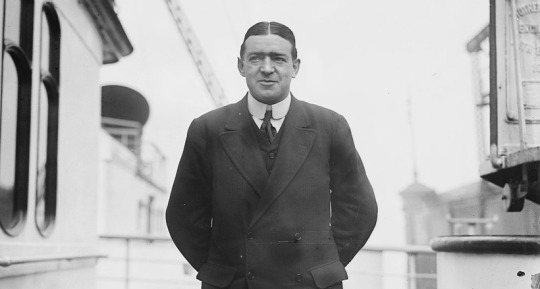
Shackleton! Shackleton was a winner! Shackleton told us what we knew to be true and wanted to hear at epic volume: that if you want something badly enough, and try really hard, you will succeed! (Especially if you can control the narrative.) Scott, on the other hand, tells us that if you want something badly enough, and try really hard . . . you may nevertheless die horribly in the snow. Nobody wants to hear that! What a downer! I think it’s no coincidence that Shackleton exploded into popular culture in the late 90s and has dominated it ever since: he is the mythic hero of the zeitgeist. I am always being asked if I’ll be doing Shackleton next. He has six graphic novels already! That is plenty! But people still want to tell and be told his story, because it’s a heroic myth that validates our worldview.
That’s why I am so determined to tell the Scott story, because Scott is who we don’t realise we need right now – and Wilson, and Bowers, and Cherry, and Atch, and all the rest. The Terra Nova Expedition is the Millennials’ polar expedition. We’ve worked really hard, we’ve done everything we were supposed to, we made what appeared to be the right decisions at the time, and we’re still losing. Nothing in the mythology we’ve been fed has prepared us for this. No amount of positive attitude is going to change it. We have all the aphorisms in the world, but what we need is an example of how to behave when the chips are down, when the Boss is not sailing into the tempest to rescue us, when the Yelcho is not on the horizon. When circumstances are beyond your power to change, how do you make the best of your bad situation? What does that look like? Even if you can’t fix anything, how do you make it better for the people around you – or at the very least, not worse? Scott tells us: you can be patient, supportive, and humble; see who needs help and offer it; be realistic but don’t give in to despair; and if you’re up against a wall with no hope of rescue, go out in a blaze of kindness. We learn by imitation: it’s easy to say these things, but to see them in action, in much harder circumstances than we will ever face, is a far greater help. And to see them exemplified by real, flawed, complicated people like us is better still; they are not fairy-tale ideals, they are achievable. Real people achieved them.
My upbringing in the 80s milieu of selfishness, which set me up to receive the Scott story so gratefully, is hardly unique. There are millions of us who are hungry for a counter-narrative. My generation is desperate for demonstrations of caring, whether it’s activism or social justice or government policies that don’t abandon the vulnerable. We’ve seen selfishness poison the world, and we want an alternative. The time for competition is past; we must cooperate or perish, but we don’t know how to do it because our mythology is founded on competition. The Scott story, if told properly, explodes the Just World Fallacy, and liberates us from the lie that has ruled our lives: that you make your own luck. What happens, happens: what matters is how you respond to it. My obsession with accuracy is in part to honour the men, and in part because Cherry was the ultimate stickler and he’d give me a hard time if I didn’t, but also because, if I’m telling the story to a new generation, I’m damn well going to make sure we get that much RIGHT. It’s been really interesting to see, online, how my generation and the next have glommed onto polar exploration narratives, not as thrilling feats of derring-do, but as emotional explorations of found family and cooperative resilience. We love them because they love each other, and loving each other helps get them through, and we want – we need – to see how that’s done. It’s time to give them the Terra Nova story, and to tell it fully, fairly, and honestly, in all its complexity, because that is how their example is most useful to us. Not as gods, and not as fools, but as real human beings who were excellent to each other in the face of disaster. I only hope that I, a latecomer to their ways, can do them justice.
#scott expedition#terra nova expedition#the worst journey in the world#captain scott#polar party#robert falcon scott#birdie bowers#edward adrian wilson#bill wilson#character#millennials#polar exploration#heroic age#adventure#sociology#neoliberalism
207 notes
·
View notes
Text
Random event: Pizza Stazione

Shoulder Devil: It's 6 degrees out. Almost... fridge-like, wouldn't you say? Go on, go on! It's perfectly preserved, and you deserve it.
Shoulder Angel: Oh no, a discarded pizza! What if someone else eats it and gets really sick? You must martyr your stomach.
As your moral council turns away from you to resume fervently and sloppily making out, you...
Eat the pizza in a selfish and gluttonous way.
Consume the dangerous pizza for the greater good.
[Transit Anxiety] You don't have time for this! Stuff the pizza into your bag, quickly, while keeping an eye on your bus.
[Public Health Degree] Qualitatively research the pizza. With tongue.
591 notes
·
View notes
Note
Does porn promote bad sex education? I know a lot of the themes show is coercive, straight up un consensual, but also shows other unsafe risky sex such as no condoms and sex with strangers.
Yep!
Condom use
This review of content analyses found condom use was depicted in only 2-3% of heterosexual pornography videos [1]
This content analysis review also found "condom use is rare" [2]
This has real world impacts:
This article found "more frequent pornography consumption was associated with using condoms less consistently ... these results are consistent with the public health position that pornography can be a risk-factor for condomless sex" [3]
Results from six nationally representative studies found "consistent with a sexual scripting perspective on media processes and effects, emerging adults who viewed pornography were more likely to have condomless sex than their peers who did not consume pornography." [4]
A study on men who have sex with men found "safe-sex intentions after viewing unprotected-sex films were lower than after viewing protected-sex films" providing "novel and ecologically valid evidence that 'bareback' pornography consumption impacts viewer’s inclinations toward sexual risk-taking by lowering their intentions to use protected sex measure" [5]
Other sexual behavior
A review of 17 studies found "for both Internet pornography and general pornography, links with greater unsafe sex practices and number of sexual partners were identified" [6]
This study narrowed in on "sexual choking" and found "consuming pornography more frequently leads to more exposure to pornographic depictions of sexual choking, which in turn predicts a higher likelihood of choking sexual partners" [7]
A review focused on adolescents found "pornography use was associated with more permissive sexual attitudes and tended to be linked with stronger gender-stereotypical sexual beliefs" and was related to "the occurrence of sexual intercourse, greater experience with casual sex behavior, and more sexual aggression, both in terms of perpetration and victimization" [8]
Using porn as sex education
A common argument on this topic is that "no one actually uses porn as sex education!!". Unfortunately, this is incorrect.
One of the earlier results concerning the relationship between porn use and condom use was dependent on participants endorsement that "pornography is a primary source of information about sex". Unfortunately, over 40% of participants agreed with this statement [3]
A nationally representative study of the US found that for 18-24 year-olds "pornography was the most commonly endorsed helpful source" in comparison to "other possible options such as sexual partners, friends, media, and health care professionals" [9]
This review of 30 qualitative studies found "pornography use is considered normal by young people, reinforced by its usefulness as a tool for pleasure, information, and instruction" [10]
Please also see:
This post about the relationship between pornography and misogynistic beliefs and behaviors
This post that debunks the idea that pornography reduces rape
This post on the causal connection between pornography and rape
References under the cut:
Carrotte, E. R., Davis, A. C., & Lim, M. S. (2020). Sexual behaviors and violence in pornography: Systematic review and narrative synthesis of video content analyses. Journal of medical internet research, 22(5), e16702.
Miller, D. J., & McBain, K. A. (2022). The content of contemporary, mainstream pornography: A literature review of content analytic studies. American Journal of Sexuality Education, 17(2), 219-256.
Wright, P. J., Sun, C., Bridges, A., Johnson, J. A., & Ezzell, M. B. (2019). Condom use, pornography consumption, and perceptions of pornography as sexual information in a sample of adult US males. Journal of Health Communication, 24(9), 693-699.
Wright, P. J. (2022). Pornography consumption and condomless sex among emerging US adults: Results from six nationally representative surveys. Health Communication, 37(14), 1740-1747.
Jonas, K. J., Hawk, S. T., Vastenburg, D., & de Groot, P. (2014). “Bareback” pornography consumption and safe-sex intentions of men having sex with men. Archives of Sexual Behavior, 43, 745-753.
Harkness, E. L., Mullan, B., & Blaszczynski, A. (2015). Association between pornography use and sexual risk behaviors in adult consumers: A systematic review. Cyberpsychology, Behavior, and Social Networking, 18(2), 59-71.
Wright, P. J., Herbenick, D., & Tokunaga, R. S. (2023). Pornography consumption and sexual choking: An evaluation of theoretical mechanisms. Health communication, 38(6), 1099-1110.
Peter, J., & Valkenburg, P. M. (2016). Adolescents and pornography: A review of 20 years of research. The Journal of Sex Research, 53(4-5), 509-531.
Rothman, E. F., Beckmeyer, J. J., Herbenick, D., Fu, T. C., Dodge, B., & Fortenberry, J. D. (2021). The prevalence of using pornography for information about how to have sex: Findings from a nationally representative survey of US adolescents and young adults. Archives of Sexual Behavior, 50, 629-646.
Peterson, A. J., Silver, G. K., Bell, H. A., Guinosso, S. A., & Coyle, K. K. (2023). Young people’s views on pornography and their sexual development, attitudes, and behaviors: A systematic review and synthesis of qualitative research. American Journal of Sexuality Education, 18(2), 171-209.
14 notes
·
View notes
Text
Fictophilia
If I were to simplify (okay, fine: oversimplify) the field of fan studies, I’d say that scholars typically take one of two broad disciplinary approaches: either they look at fan works (and come from fields like literary studies, media and film studies, etc.) or they look at fan cultures and social organizations (ethnography, anthropology.) But other academic disciplines produce research that might be pertinent to fans and fan studies–for instance, psychology.
I recently came across an article called “Fictosexuality, Fictoromance, and Fictophilia: A Qualitative Study of Love and Desire for Fictional Characters,” (2020) written by Veli-Matti Karhulahti and Tanja Välisalo in the journal Frontiers of Psychology. The abstract explains:
Fictosexuality, fictoromance, and fictophilia are terms that have recently become popular in online environments as indicators of strong and lasting feelings of love, infatuation, or desire for one or more fictional characters. This article explores the phenomenon by qualitative thematic analysis of 71 relevant online discussions. Five central themes emerge from the data: (1) fictophilic paradox, (2) fictophilic stigma, (3) fictophilic behaviors, (4) fictophilic asexuality, and (5) fictophilic supernormal stimuli. The findings are further discussed and ultimately compared to the long-term debates on human sexuality in relation to fictional characters in Japanese media psychology. Contexts for future conversation and research are suggested.
The article is generally descriptive and nonjudgmental, and the authors note that “the present intention is not to propose fictophilia as a problem or a disorder,” but instead to assert that most people are “fully aware of the love-desire object’s fictional status and the parasocial nature of the relationship.” (In other words, we’re mostly pretty sane!) The essay also cites some interesting work that I’ve not seen typically referenced in literary or ethnographic fan studies works, including the proto-fan studies text Imaginary Social Worlds, by John L. Caughey (1984). While Caughey’s book (like many works of the 1980s) starts by evoking the figure of crazy or even homicidal fan (think Mark David Chapman or John Hinkley), his goal is to argue that ‘fantasy relationships’ are actually pretty normal. The book looks at “fantasy relationships” across history, connecting fan crushes on characters and celebrities “to the lifelong bonds that people in different cultures have conventionally had with gods, monarchs, spirits, and other figures that they may never have had the chance to meet in person.” While Caughey’s book is focused on Western history, Karhulahti and Välisalo’s “Fictosexuality” takes its examples primarily from Japan, examining numerous psychological studies of “Japan and its fiction-consuming ‘otaku’ cultures.” This gives it a global take not always seen in English-language fan studies texts (which tend to deal primarily with Western media.) “Fictosexuality” is also unusual for its interest in making connections between asexuality and fictophilia, asexuality also being underrepresented (and under-theorized) in fan studies texts.
Fans have historically been wary of any attempt to psychoanalyse them–and fair enough: after all, it was only recently that people stopped assuming that all fans were out-of-control “fanatics,” and there’s been a lot of creepy and misleading work on fandom done by outsiders. (If you want agita, look up SurveyFail on Fanlore.) But psychology and related fields may also have methods which allow us to understand fans and fandom in new ways.
–Francesca Coppa, Fanhackers volunteer
#author: Francesca Coppa#fanhackers#psychology#fictophilia#I love many imaginary people#and some real ones :D
95 notes
·
View notes
Text
Understanding the Depths of Qualitative Business Research: A Journey into Understanding Consumer Behavior
In the ever-evolving landscape of business, understanding consumer behavior stands as a cornerstone for success. Every decision, from product development to marketing strategies, hinges upon a deep comprehension of what drives consumers’ choices. This is where qualitative business research steps in, offering a journey into the intricate realms of the consumer psyche. Join us as we explore the significance of qualitative research in unraveling the mysteries of consumer behavior.
Understanding Qualitative Business Research
At the heart of qualitative business research lies a quest for depth and richness of understanding. Unlike its quantitative counterpart, which deals with numerical data and statistical analysis, qualitative research focuses on exploring attitudes, behaviors, and motivations through methods such as interviews, focus groups, and observation.
The Essence of Consumer Behavior
Consumer behavior is a complex interplay of various factors, including psychological, cultural, and social influences. To decode this intricate puzzle, businesses employ qualitative research methods to delve deeper into consumers’ minds, unveiling insights that quantitative data alone cannot provide.
Peering into Consumer Psyche
Qualitative research allows businesses to get up close and personal with consumers, providing valuable insights into their perceptions, preferences, and decision-making processes. Through in-depth interviews and focus groups, researchers can uncover the underlying motivations, desires, and pain points driving consumer behavior.
Exploring Consumer Motivations
One of the key objectives of qualitative research is to unearth the motivations behind consumer actions. By engaging directly with consumers in open-ended discussions, researchers can uncover the underlying drivers that influence their choices. Whether it’s the desire for status, the need for convenience, or the quest for self-expression, qualitative research helps businesses decipher the underlying motivations driving consumer behavior.
Unveiling Consumer Perceptions
Perceptions play a pivotal role in shaping consumer behavior. How consumers perceive a brand, product, or service can significantly impact their purchasing decisions. Through qualitative research methods like focus groups and ethnographic studies, businesses can gain valuable insights into how consumers perceive their offerings and identify areas for improvement.
Navigating Cultural Influences
Culture exerts a profound influence on consumer behavior, shaping values, norms, and preferences. Qualitative research allows businesses to navigate the complex terrain of cultural influences, helping them understand how cultural factors impact consumer perceptions and behaviors. By embracing cultural sensitivity and conducting ethnographic research, businesses can tailor their strategies to resonate with diverse consumer segments.
Uncovering Hidden Trends
In today’s fast-paced business environment, staying ahead of trends is crucial for maintaining a competitive edge. Qualitative research enables businesses to uncover emerging trends and anticipate shifts in consumer behavior before they become mainstream. By immersing themselves in consumers’ lives and observing their behaviors firsthand, researchers can identify nascent trends and capitalize on them proactively.
Informing Strategic Decision-Making
Ultimately, the insights gleaned from qualitative research inform strategic decision-making across all facets of business operations. From product development and marketing campaigns to customer experience initiatives, qualitative research provides the foundation upon which businesses can build successful strategies that resonate with their target audience.
Conclusion
In the realm of business, understanding consumer behavior is paramount to success. Through qualitative business research, businesses embark on a journey into the depths of the consumer psyche, unraveling insights that shape strategic decision-making. By peering into consumers’ motivations, perceptions, and cultural influences, businesses can gain a competitive edge in today’s dynamic marketplace.
So, embrace the power of qualitative research and unlock the secrets to winning over consumers’ hearts and minds.
Visit Philomath Research to learn more about how qualitative research can transform your business strategy and propel you toward sustainable growth.
FAQs
What is qualitative business research, and how does it differ from quantitative research?
Qualitative business research focuses on exploring attitudes, behaviors, and motivations through methods like interviews, focus groups, and observation. It delves into the depth and richness of understanding, whereas quantitative research deals with numerical data and statistical analysis.
Why is understanding consumer behavior crucial for businesses?
Consumer behavior insights are essential for businesses as they inform strategic decision-making across all aspects of operations, including product development, marketing strategies, and customer experience initiatives. Understanding what drives consumers’ choices is key to staying competitive and meeting consumer needs effectively.
How does qualitative research help in unraveling consumer motivations?
Qualitative research allows businesses to engage directly with consumers in open-ended discussions, uncovering the underlying motivations behind their actions. Through methods like in-depth interviews and focus groups, researchers can delve into consumers’ desires, needs, and pain points, providing valuable insights into their decision-making processes.
What role does perception play in consumer behavior, and how does qualitative research address it?
Perception significantly influences consumer behavior, impacting how consumers perceive brands, products, and services. Qualitative research methods like focus groups and ethnographic studies help businesses gain insights into consumers’ perceptions, identifying areas for improvement and enhancing brand positioning.
How does qualitative research navigate cultural influences on consumer behavior?
Culture plays a pivotal role in shaping consumer behavior, and influencing values, norms, and preferences. Qualitative research embraces cultural sensitivity and conducts ethnographic studies to understand how cultural factors impact consumer perceptions and behaviors. By acknowledging cultural influences, businesses can tailor their strategies to resonate with diverse consumer segments effectively.
#qualitative business research#consumer behavior#qualitative research#qualitative market research#qualitative market research agency
0 notes
Text
Unlocking the Power of Primary Market Research: A Path to Informed Business Decisions
In today's rapidly evolving business landscape, understanding market dynamics, consumer preferences, and competitive positioning has become increasingly crucial for organizations seeking to gain a competitive edge. Primary Market Research, a critical component of a comprehensive market research strategy, offers businesses valuable insights by directly engaging with their target audience. Through surveys, interviews, focus groups, and observations, companies can gather first-hand information that helps them make informed decisions. SG Analytics, a leader in Primary Research Services, provides businesses with the tools and expertise to navigate these challenges effectively.
Understanding Primary Market Research
Primary Market Research involves collecting original data directly from sources such as potential customers, industry experts, or competitors. Unlike secondary research, which relies on existing data, primary research is tailored to a company’s specific needs and objectives. This approach allows businesses to obtain highly relevant and up-to-date information, ensuring that their strategies align with current market conditions.
Primary Market Research can be broadly categorized into two types:
Qualitative Research: This type of research focuses on understanding the underlying reasons, motivations, and opinions behind consumer behavior. Methods such as in-depth interviews, focus groups, and ethnographic studies are commonly used to gather qualitative data. The insights obtained from qualitative research are often rich and detailed, providing a deep understanding of consumer perceptions.
Quantitative Research: Quantitative research, on the other hand, involves collecting numerical data that can be statistically analyzed. Surveys, questionnaires, and online polls are typical methods used to gather quantitative data. This type of research is valuable for identifying trends, measuring market potential, and making data-driven decisions.
The Importance of Primary Market Research
In an era where consumer preferences can shift rapidly, relying solely on historical data or secondary research may not be sufficient. Primary Market Research offers several key advantages:
Tailored Insights: Because the data is collected specifically for a particular research objective, the insights obtained are highly relevant and actionable. Businesses can customize their research methods to target specific demographics, geographic locations, or market segments.
Real-Time Data: Primary Market Research provides real-time information about market trends, consumer behavior, and competitor activities. This allows businesses to react quickly to changes in the market and adjust their strategies accordingly.
Competitive Advantage: By obtaining first-hand information, companies can gain a competitive edge over their rivals. Understanding customer needs and preferences better than the competition allows businesses to create products and services that truly resonate with their target audience.
Informed Decision-Making: With accurate and up-to-date data at their disposal, business leaders can make informed decisions that are more likely to lead to successful outcomes. Whether launching a new product, entering a new market, or refining marketing strategies, the insights gained from primary research are invaluable.
SG Analytics’ Approach to Primary Research Services
SG Analytics offers a comprehensive suite of Primary Research Services designed to meet the diverse needs of businesses across industries. Their approach to primary research is grounded in a deep understanding of the client's objectives, market dynamics, and target audience. Here’s how SG Analytics helps businesses unlock valuable insights:
Customized Research Solutions: SG Analytics understands that every business is unique, with its own set of challenges and opportunities. They work closely with clients to design customized research solutions that address specific business needs. Whether it’s exploring new market opportunities, understanding customer satisfaction, or analyzing competitor strategies, SG Analytics tailors its approach to deliver actionable insights.
Diverse Research Methodologies: SG Analytics employs a wide range of research methodologies to gather data. These include in-depth interviews, focus groups, surveys, mystery shopping, and observational studies. By using a mix of qualitative and quantitative techniques, SG Analytics ensures that clients receive a comprehensive understanding of their market.
Global Reach: With a global presence and expertise in multiple industries, SG Analytics is equipped to conduct research across different geographies. This is particularly valuable for businesses looking to expand into new markets or understand international consumer behavior.
Expert Analysis: Data collection is only part of the equation. SG Analytics’ team of experienced analysts and industry experts meticulously analyzes the data to extract meaningful insights. They provide clients with detailed reports, actionable recommendations, and strategic guidance to help them achieve their business goals.
Ethical Research Practices: SG Analytics is committed to conducting research ethically and responsibly. They adhere to the highest standards of data privacy and confidentiality, ensuring that all research participants are treated with respect and that their information is protected.
Case Study: Success Through Primary Market Research
To illustrate the value of Primary Market Research, consider a case study of a consumer goods company looking to launch a new product in a highly competitive market. The company engaged SG Analytics to conduct primary research to understand consumer preferences, market trends, and potential barriers to entry.
SG Analytics designed a research strategy that included focus groups, in-depth interviews, and a large-scale survey of the target demographic. The insights gained from this research revealed a previously overlooked consumer need that the company could address with its new product. Additionally, the research identified key marketing messages that would resonate with the target audience.
Armed with this information, the company successfully launched its product, achieving higher-than-expected sales and gaining a significant market share. The insights from SG Analytics’ Primary Research Services were instrumental in guiding the company’s product development and marketing strategies, ultimately leading to its success.
Conclusion
In a world where market conditions are constantly changing, businesses cannot afford to rely on outdated or generic information. Primary Market Research provides the timely, relevant, and actionable insights needed to make informed decisions and stay ahead of the competition. SG Analytics, with its expertise in Primary Research Services, offers businesses the tools and knowledge they need to succeed in today’s dynamic marketplace. By leveraging customized research solutions, diverse methodologies, and expert analysis, SG Analytics empowers businesses to unlock valuable insights and drive growth.
5 notes
·
View notes
Text
What Is Consumer Research: Methods, Types, Scope & Examples
Explore the world of consumer research with our comprehensive blog. Learn about various research methods, types, and the broad scope of consumer studies. Dive into real-world examples to understand how consumer research impacts businesses and shapes the market landscape. Elevate your knowledge and stay ahead in the dynamic field of consumer insights.
#Consumer research methods#Types of consumer research#Scope of consumer studies#Consumer research examples#Quantitative research in consumer studies#Qualitative approaches in consumer research#Ethical considerations in consumer studies#Consumer behavior analysis#Market research techniques#Demographic analysis in consumer research#Psychographic research methods#Consumer insight generation#Brand perception research#Product testing in consumer studies#Comparative consumer analysis#Cross-cultural consumer research#Technology in consumer studies#Future trends in consumer research#Data-driven consumer insights#Consumer decision-making models#Survey methods in consumer research#Focus group dynamics#Case studies in consumer research#Consumer satisfaction measurement#Trend analysis in consumer studies#Retail environment studies#Consumer feedback and reviews#Online consumer behavior#Social media impact on consumer research#Global consumer trends
0 notes
Note
When it comes to Joe Rogan, I’m of two minds. On the one hand, he doesn’t really take responsibility for having a large platform that clearly reaches and influences a lot of people.
On the other, if you’re primarily getting your medical and political information from Joe Rogan podcasts, isn’t there a bit of personal responsibility that needs to be taken from the individual?
I would love for people to take personal responsibility to vet the information that they consume and are exposed to. Not only would that weed out the cranks, but it would improve the quality of genuine sources and prevent filter bubbles. Contrarians and freedom to question are an essential part of the information ecosystem and avoiding groupthink, which creates a much healthier population overall. That's not going to happen though.
One problem is quantity, there is simply too much information for the average Joe or Jane to fact-check. If you've ever heard the term "big data" and know what that industry is all about, you'll know that there's simply an enormous amount of data out there that needs to be made sense of that simply can't be done by the normal human brain. We've not only been making algorithms to filter out the noise and get only the parts of data that are useful, but we've been designing machine learning to be able to automate that, to train computers by programming to recognize these things simply so we can produce useful knowledge out of massive data sets. We only have so much attention span and so much time to spend researching to find out what is true and what isn't.
The other problem is qualitative, you need expertise to be able to determine what's real and what's pseudo-realistic bunk. Charlatans from throughout history have used the seeming appearance of knowledge to grift people that don't have the specialized knowledge to know better, and I know this from personal experience. These days, disinformation is carefully curated for maximum psychological validation that causes the listener to self-curate and automatically tune out any evidence to the contrary. Just look at any of Putin's or Medvedev's speeches at how they are carefully tailored for everyone from tankies to alt-right tradcons to pick and choose a line to run with to further their grandiose delusion of reality. Rogan might just be engaging any sort of contrarian on his podcast to appeal to his target audience, but if you don't know anything about the subject, you might believe whatever bogus study was commissioned because it sounds authoritative and you don't have the knowledge to correct it. This comes from a guy who is highly critical of some of what academia does - particularly history departments - you do need experts and they do need credibility.
In an ideal world, we'd have trusted sources of information, institutions with the weight of validity behind them, but unfortunately we simply don't have that these days. Part of it is the institutions' fault, they are reluctant to admit when they're wrong and the idea of promoting healthy debate has long gone out of style in favor of a quick serotonin high castigating any dissent as immoral. Technology these days has only contributed to the information overload which curates filter bubbles and groupthink for maximum engagement. But a lot of it isn't, there's plenty of malicious actors who use every trick of the trade to prey on people because they don't know and are too busy to be able to figure it out. Click-based algorithms, short attention spans cultivated by TikTok and Twitter, and highly sophisticated disinformation programs have done a lot of harm to the information space.
What I'm at a loss to do, however, is find a way to fix it in a practical sense. A truth and information board would simply become co-opted and corrupted and anyone who doesn't believe that is either a damn fool or hoping for the power to be the arbiter of truth. Letting the information space lie has not produced a sort of self-correction. Sorry to end it on a downer, but that's just how it is.
Thanks for the contribution, Anon.
SomethingLikeALawyer, Hand of the King
14 notes
·
View notes
Text
Haanuwise Reveals:7 Benefits of Outsourcing Market Research

In today's fast-paced business environment, staying ahead of the competition is crucial. To make informed decisions and drive growth, companies need accurate market insights. However, conducting comprehensive market research in-house can be resource-intensive and time-consuming. This is where outsourcing market research services can be a game-changer. Companies like Haanuwise offer specialized expertise and resources to help businesses navigate the complexities of the market landscape. Here are seven key advantages of outsourcing market research services:
Cost Efficiency: Outsourcing market research services can significantly reduce costs compared to maintaining an in-house research team. With outsourcing, businesses can avoid expenses related to hiring, training, and retaining specialized staff. Additionally, outsourcing providers like Haanuwise often operate in regions with lower labor costs, offering competitive pricing without compromising on quality.
Access to Specialized Expertise: Market research encompasses various methodologies and techniques, from quantitative surveys to qualitative focus groups. Outsourcing allows businesses to tap into the specialized expertise of professionals who are well-versed in these methodologies. Companies like Haanuwise employ experienced researchers who understand industry best practices and can deliver valuable insights tailored to specific business needs.
Scalability and Flexibility: Market research needs can fluctuate depending on business cycles, product launches, or market shifts. Outsourcing provides scalability and flexibility, allowing companies to scale up or down their research efforts as needed. Whether it's a one-time project or ongoing support, outsourcing partners like Haanuwise can adapt to changing requirements and timelines efficiently.
Time Savings: Time is of the essence in today's competitive landscape. Outsourcing market research services frees up valuable time for internal teams to focus on core business activities. By leveraging the expertise of outsourcing providers like Haanuwise, businesses can expedite the research process without compromising quality, enabling faster decision-making and go-to-market strategies.
Access to Advanced Technologies: Keeping pace with the latest market research technologies and tools can be challenging for internal teams. Outsourcing partners like Haanuwise invest in state-of-the-art technologies and platforms to enhance research capabilities and deliver actionable insights. From data analytics software to survey tools, outsourcing providers leverage advanced technologies to streamline the research process and drive better outcomes.
Global Reach: In today's interconnected world, businesses often operate on a global scale, requiring market insights from diverse geographic regions. Outsourcing market research services offers access to a global network of researchers and analysts who possess localized knowledge and cultural insights. Companies like Haanuwise have a presence in multiple regions, allowing businesses to gain a comprehensive understanding of international markets and consumer behaviors.
Confidentiality and Data Security: Market research often involves sensitive information and proprietary data. Outsourcing partners like Haanuwise prioritize confidentiality and data security, implementing robust protocols and safeguards to protect client information. From secure data transmission to compliance with privacy regulations, outsourcing providers adhere to stringent standards to ensure the confidentiality and integrity of research data.
Also, check related links
Corporate Strategy
Industry Research
2 notes
·
View notes
Text
𝗕𝗹𝗼𝗴 #𝟭 𝗜𝗻𝘁𝗼 𝘁𝗵𝗲 𝗩𝗲𝗻𝘁𝘂𝗿𝗲𝗩𝗲𝗿𝘀𝗲
I've always been attracted by the beauty of politics in business. How people can settle and manage their financial transactions through efficient communication, proficiency, and the development of plans using scientific methods in research to patch up gaps and establish projects based on solvency. Selling your business necessitate you to be able to speak persuasively, and I admit that it was still challenging for me to gather my thoughts and be confident enough to approach people and persuade them about something, despite the fact that I am a Political Science major and thus expected to be good at public speaking. However, our interview activity gave me the opportunity to venture outside of my comfort zone. In a larger perspective, it made the realm of politics and entrepreneurship converge in a sense that I was able to practice the art of identifying grassroot problems to provide solutions for the betterment of learning and quality education, which is entirely the definition of politics, and to make it income generating, we have to devise a product or services to cater the needs of the people, which is in the business realm, and for me to be able to show my innovative skills, I have to also link the realm of entrepreneurship hence, I believe that I can pour out all the learning application of my three years residency in political science in this subject.
EXPERIENCE
The encounter itself was enjoyable. During our preparation phase, I was able to demonstrate my leadership skills by devising techniques to make our workload more efficient by assigning ourselves quotas to meet. Personally, I wanted our data to exceed 100, but owing to forthcoming requirements, we opted to limit the quota at 50-60 interviewees. I assigned the deadlines, responsibilities, and established a bureaucratic framework to guarantee that each of us fulfilled our tasks; thus, before the interview, I ensured that the Google Drive was available for the uploading of our documentation, specifically images, videos, and recordings. Google Docs is also ready for the consolidated report, which includes both the quantitative and qualitative data. To avoid delays, I have also assigned the secretary to monitor task completion.
BEFORE THE INTERVIEW/D-DAY
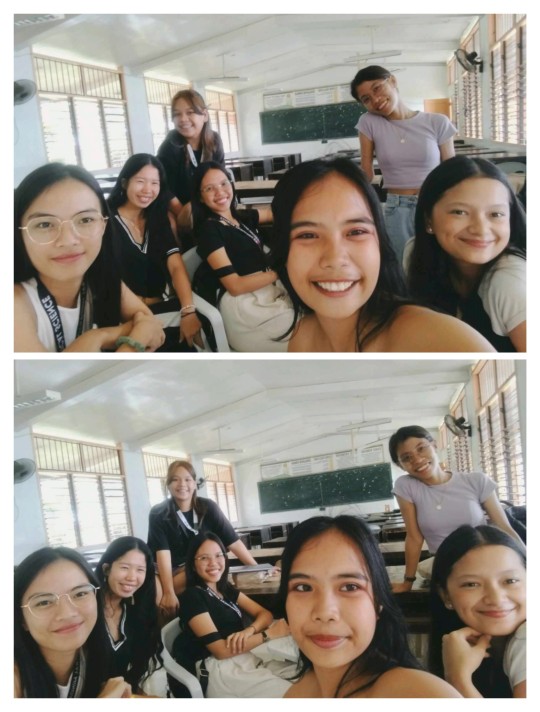
During the interview, it became increasingly difficult to identify students who are not shy in front of the camera and are willing to participate. Fortunately, I know a lot of people at the university, which gave me an edge in finding interviewers. An individual interview was initially conducted, but I later realized that it was time consuming and made the interviewee more shy due to the pressure and tension of becoming embarrassed, so I have to make small talk with the interviewee first to ensure that I will be able to break the ice and allow comfort to kick in. We experimented with combined interviews, team interviews, and partner interviews alongside Eloisa. As a result, we were able to troubleshoot problems during the interview by devising plans and trying out different techniques. Regardless of the outcome, I believe it gave me confidence to take risks and become resilient, both of which are essential in entrepreneurship, especially since one major challenge is dealing with people with different tastes, preferences, and attitudes.
D-DAY
INTERVIEWEES #1 and #2
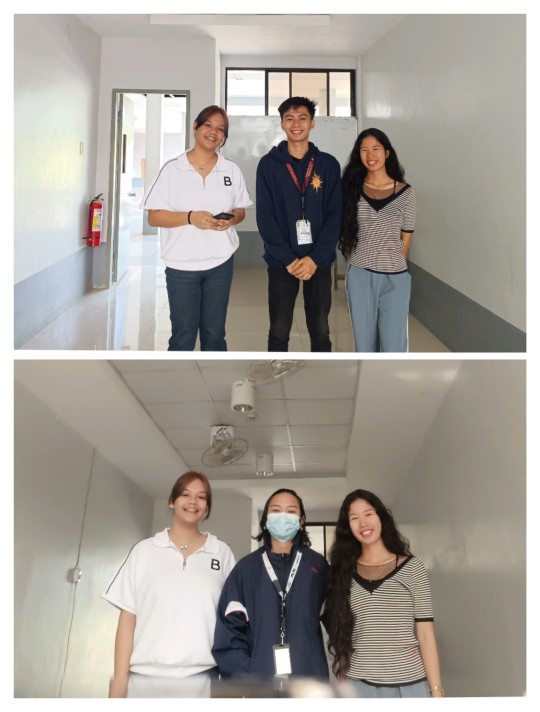
Eloisa and I with our first interviewee from the program of Sociology. The problem identified was the absence of comfortable tambayan with good food.
Our second respondent is from BSED PE and the problem identified was waste problems.
INTERVIEWEES #3 and #4
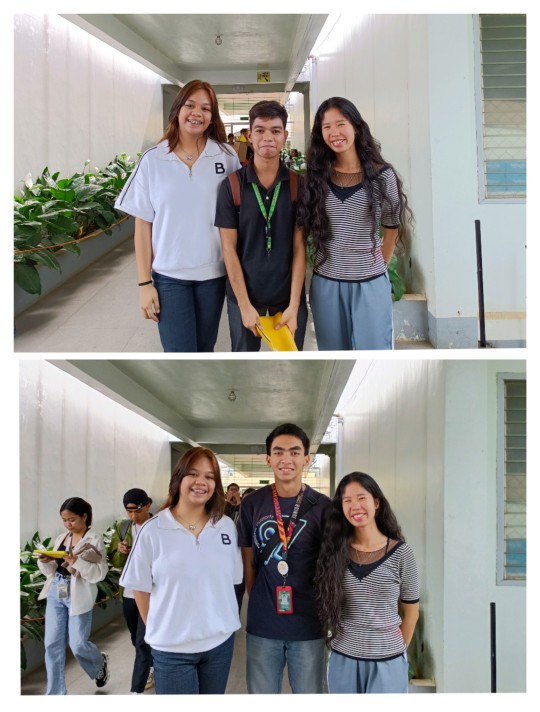
The third interviewee is also from BSED PE and the problem identified was mental health issues due to the pressure being felt by students.
The fourth interviewee is from the College of Business and Management major in Finance. The problem identified was ventilation due to poor budgeting of the university.
INTERVIEWEES #5 & #6 and #8 & #9
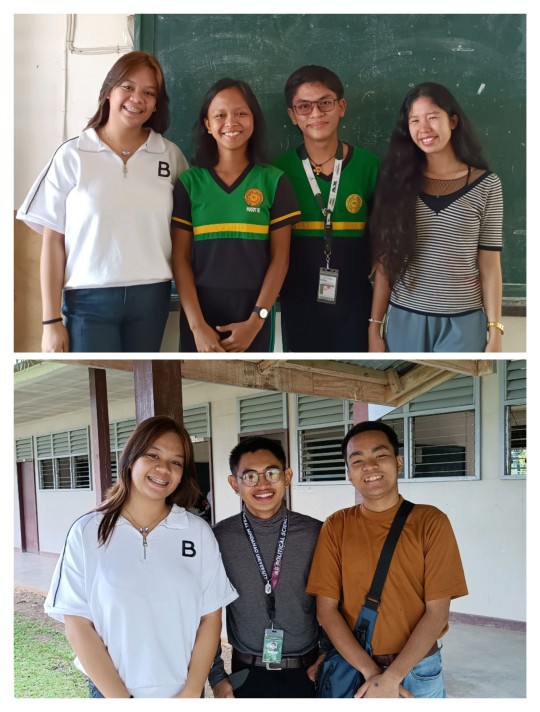
The fifth and sixth interviewees are from the program of BS Bio. The problems identified are transportation and printing problems due to the location of printing services.
The 8th and 9th interviewees are both from the program of AB Political Science. The problem identified is waste problems.
Bonus GIF
Caught on 4K: Ma'am Butalid, the program coordinator

INTERVIEWEES #10 & #11 and #11, #12, #13, & #14
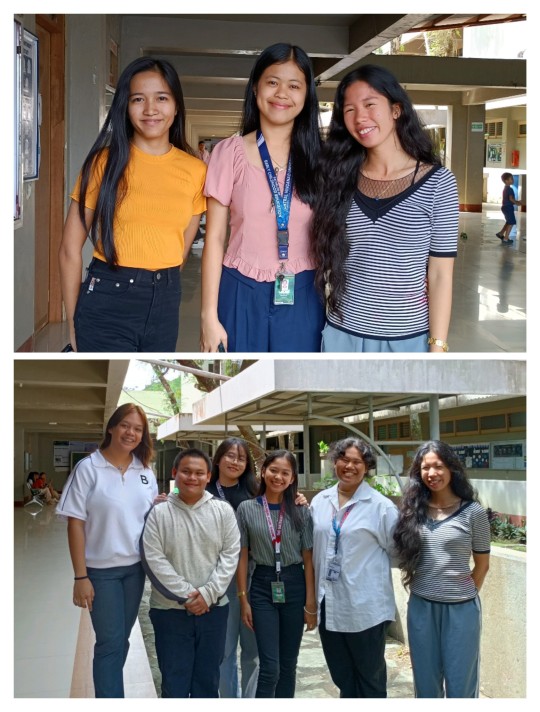
The tenth and eleventh interviewees are both from the College of Education. The problem that was identified is also the prevalent waste problem.
All four interviewees (11-14) are from the program of AB Political Science and the problems identified were insufficiency of educational tools, transportation, waste problems, and illegal business (no permit).
INTERVIEWEES #15 & #16
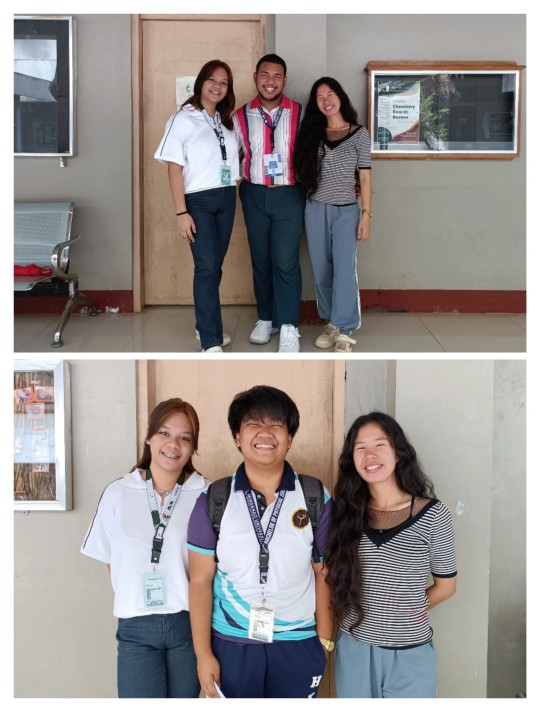
Our fifteenth interviewee is from the program of BS Math and the problem identified was waste problem.
The last interviewee is from BSED PE and the problem identified was waste problem.
AFTER THE INTERVIEW
Following the interview and consultation with the instructor, we were able to share our views, suggestions, and data results, so with waste management being the most pressing issue at the university based on our data gathered from the series of interview, we looked for potential products and services that would be the greatest solution. We had a lot of prospects for the proposal because I came prepared, and I had already researched sustainable products online through various platforms to make our decision process easier. Following the deliberation, it was decided to proceed with the conversion of leaves into paper, with modifications such as colour classification and scented option.
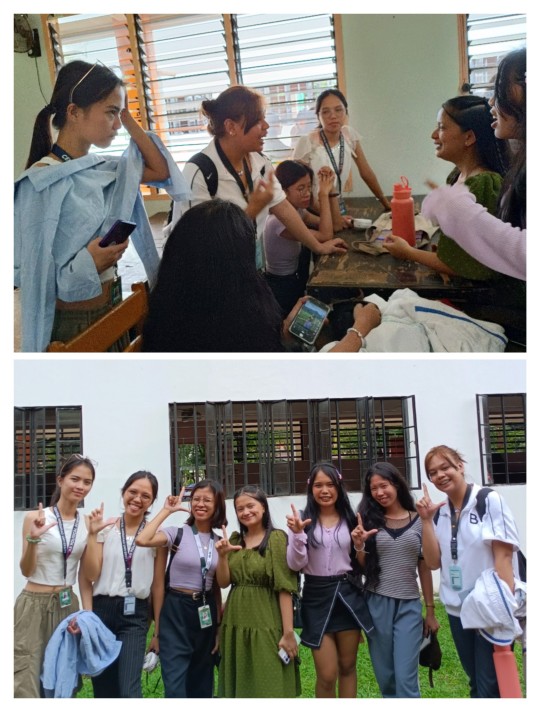
RESULTS OF THE INTERVIEW
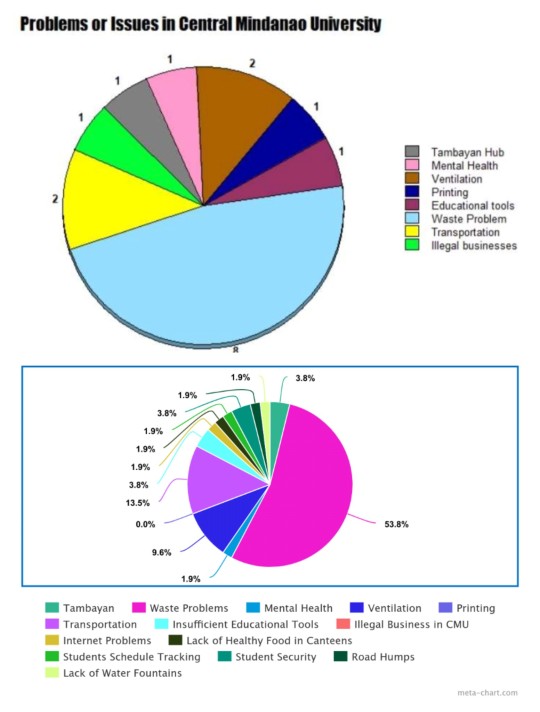
The first pie chart shows the result of our joint interview. It has been revealed that there are 8 identified problems and the top three are the following: (1) Waste problems, (2) Transportation, and (3) Ventilation. Meanwhile, for the consolidated result, it was revealed that waste problems still hold the top issue that the CMUans are currently facing and have been posing grave concerns weighing 53.8 percent out of 55 respondents being interviewed. Therefore, we have decided to go with a visionary EcoVenture product called "EVERLEAF" which means everlasting leaf which aims to stop deforestation and degradation of the environment 🌿
REFLECTION
Through this dialogue, I have come to understand that that, despite the fact that we are in a micro level setting, the problem that we are facing in the university is ubiquitous since corporations do nothing about it because they just care about profit. Sustainable practices are difficult to implement since they may inhibit economic growth, which is something every businessman avoids. The ongoing problem of deforestation, erosion, and forest fires will exist unless we begin to develop regulations and sanction big industries. Thus, this subject is an excellent way to enter the VentureVerse because anyone may be a businessman, but not everyone can sustain their business owing to the ups and downs of business hence, it needs strong mentality.
LEARNINGS
Furthermore, this interview helped me identify my strengths, such as strategic leadership, critical thinking, resiliency to troubleshoot unforeseen problems that require immediate solutions, adaptability, time management skills, and the ability to remain rational at all times in order to manage the team. While I accept my inadequacies, such as my public speaking abilities and approaching strangers, it has provided me with opportunities to identify areas for improvement. It taught me that mistakes and failures are inevitable and necessary for learning and growth. Every master was once a beginner in their chosen industry. As a result, I feel that by constantly improving and allowing oneself to admit mistakes, I will be able to recognise threats that are critical for mitigating macro consequences on the endeavour.
To summarise everything, I am excited for the thrills of this rollercoaster journey. The uncertainty makes me rosier about the future. Risks are what keep me alive. It piques my interest in exploring new horizons. I am challenged to venture beyond of my comfort zone in order to try new things and discover more about myself.
2 notes
·
View notes